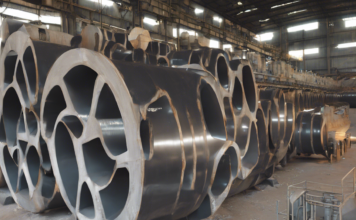Label printers are indispensable tools for businesses that require efficient and accurate labeling for various purposes such as packaging, shipping, organization, and branding. However, to fully unlock the potential of your label printer, it’s crucial to use the right paper. The choice of label printer paper directly impacts the print quality, durability, and overall performance of your labels. In this step-by-step guide, we will explore the key considerations and steps to help you maximize your label printer’s potential by selecting the perfect paper.
Step 1: Determine Your Labeling Needs
Before diving into the world of label printer paper, it’s essential to clearly define your labeling requirements. Consider factors such as the application of labels (shipping, product labeling, organization), the environment in which they will be used (indoor or outdoor), the expected lifespan of the labels, and any specific features required (waterproof, temperature-resistant, etc.). Understanding these needs will help you select the most suitable label printer paper.
Step 2: Understand Label Printer Paper Types
Label printer paper comes in various types, each designed for different purposes. Here are some common types to consider:
- a) Direct Thermal Paper: This type of paper is heat-sensitive and produces images through direct heat from the printer. It is ideal for short-term labeling applications, such as shipping labels, receipts, and temporary tags. However, direct thermal labels may fade over time and are sensitive to heat and light exposure.
- b) Thermal Transfer Paper: Thermal transfer paper requires the use of a ribbon to transfer the ink onto the labels. This method provides more durable and long-lasting labels, making it suitable for applications requiring resistance to harsh environments or extended shelf life.
- c) Synthetic Paper: Synthetic paper is a durable and tear-resistant option that offers exceptional resistance to water, oil, chemicals, and UV light. It is commonly used for outdoor labels, product identification, and asset tagging where durability is paramount.
- d) Specialty Paper: Some label printers support specialty paper, such as fluorescent or colored paper, which can be used for highlighting important information or adding visual appeal to the labels.
Step 3: Consider Label Size and Format
The size and format of your labels play a vital role in determining the appropriate label printer paper. Measure the required label size accurately, considering both width and length. Additionally, check if your label printer supports continuous rolls or pre-cut labels. Continuous rolls offer flexibility in label length, while pre-cut labels provide convenience and ease of use.
Step 4: Check Compatibility with Your Label Printer
Ensure that the label printer paper you choose is compatible with your specific label printer model. Consult the printer’s user manual or manufacturer’s website for recommended paper types and specifications. Using incompatible paper can result in subpar print quality, printer malfunctions, and wasted resources.
Step 5: Evaluate Print Quality and Durability
Print quality is a crucial aspect of label printer paper. Look for paper options that offer excellent print resolution, sharpness, and color vibrancy to ensure your labels are legible and visually appealing. Additionally, consider the durability of the paper. Labels subjected to moisture, extreme temperatures, or rough handling may require more robust paper options to ensure longevity.
Step 6: Compare Prices and Availability
Consider the cost and availability of label printer paper. While it’s essential to find a paper that meets your requirements, it’s also important to ensure it fits within your budget. Compare prices from different suppliers and evaluate the long-term cost implications, especially if you require a large number of labels regularly.
Conclusion:
By following this step-by-step guide, you can maximize your label printer’s potential by choosing the right paper. Carefully assess your labeling needs, understand the different types of label printer paper available, consider label size and format, ensure compatibility with your printer, evaluate print quality and durability, and compare prices. With the perfect label printer paper, you can achieve high-quality, durable labels that meet your business requirements, enhance branding, and streamline your labeling processes.






